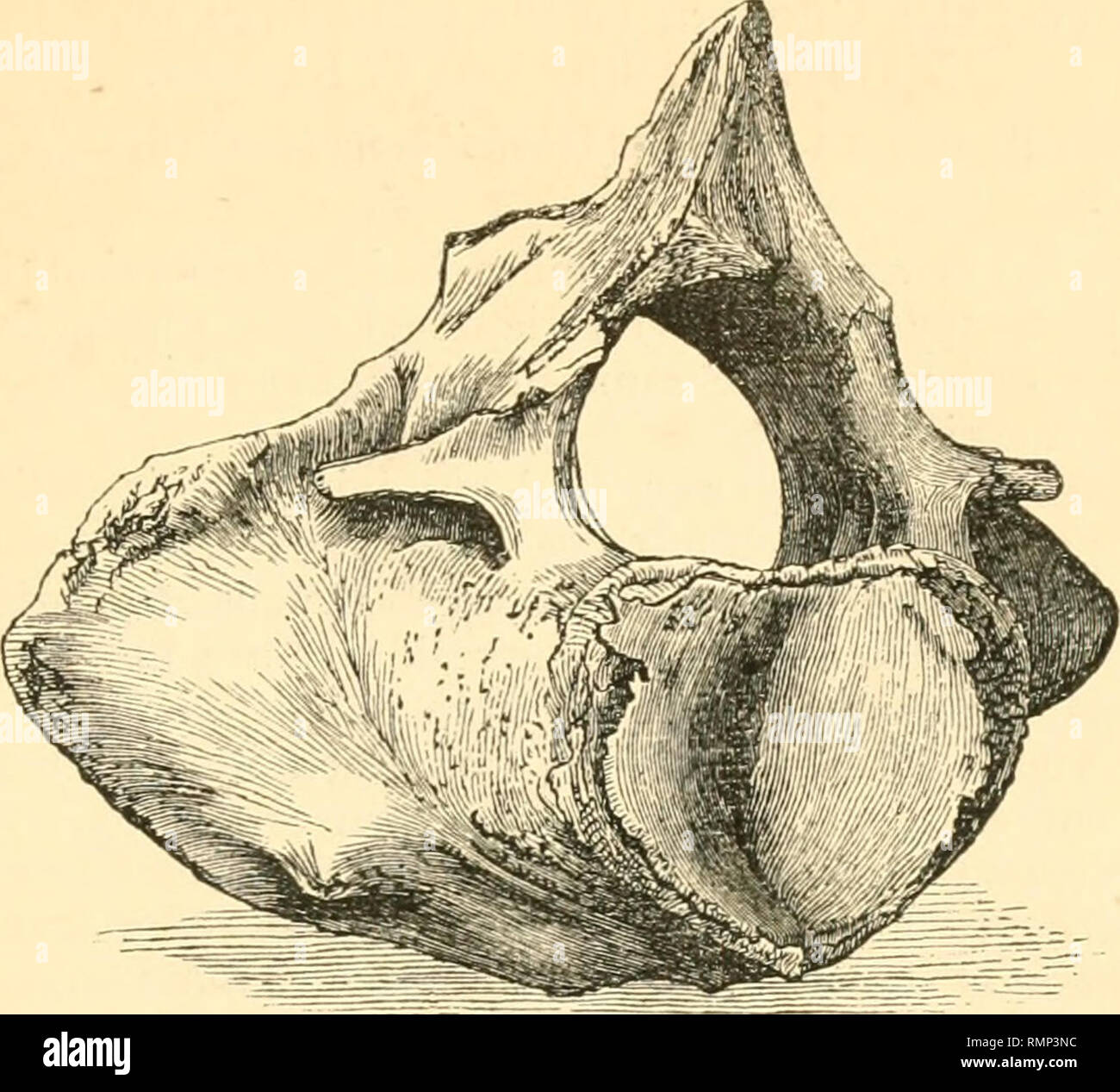. The Annals and magazine of natural history; zoology, botany, and geology. Natural history; Zoology; Botany; Geology. Dr. J. E. Gray on a new Sperm Whale. 289 The lateral processes of the second, third, and fourth vertebrae are produced and united into a broad, thick, angular process, which is expanded at the side, giving the united mass a rhombic appearance, the width of the side being about one-fourth more than the height of the mass. Fi g-. Side view of the hinder side of the cervical vertebrae of Catodon Krefftii. There is a tubercle, which is most probably the end of the lower lateral pr

Image details
Contributor:
Library Book Collection / Alamy Stock PhotoImage ID:
RMP3NCFile size:
7.1 MB (351.8 KB Compressed download)Releases:
Model - no | Property - noDo I need a release?Dimensions:
1661 x 1504 px | 28.1 x 25.5 cm | 11.1 x 10 inches | 150dpiMore information:
This image is a public domain image, which means either that copyright has expired in the image or the copyright holder has waived their copyright. Alamy charges you a fee for access to the high resolution copy of the image.
This image could have imperfections as it’s either historical or reportage.
. The Annals and magazine of natural history; zoology, botany, and geology. Natural history; Zoology; Botany; Geology. Dr. J. E. Gray on a new Sperm Whale. 289 The lateral processes of the second, third, and fourth vertebrae are produced and united into a broad, thick, angular process, which is expanded at the side, giving the united mass a rhombic appearance, the width of the side being about one-fourth more than the height of the mass. Fi g-. Side view of the hinder side of the cervical vertebrae of Catodon Krefftii. There is a tubercle, which is most probably the end of the lower lateral process of one of the anterior cervical vertebrae, at the lower part of the hinder side of the front lateral expansion. The three hinder vertebrae have no distinct lower lateral processes ; their place is only marked by three slight ridges on the lower edge of the hinder side of the mass. The upper lateral processes of the hinder cervical vertebrae are small, slender, forming a strap-like sec- tion, rather tapering towards and truncated at the tips on the side of the apertures for the passage of the nerves for the neural canal. The neural canal is rather large, oblong transverse, the height being about two-thirds of the width ; it is rather larger and higher behind. The hinder surface of the body of the last cervical vertebra is ob- long transverse, about two-thirds of the height of its width at the widest part; the lower edge is rounded and rather angularly pro- duced in the centre, and the upper margin transverse, with a slight central depression; the surface is concave, with a central, linear, perpendicular, compressed line. The cervical vertebrae in Catodontid<e are united into a single mass by their bodies, the neural arch, and the lateral processes. The lateral processes of the anterior vertebrae are produced, and form a thick, subcorneal, triangular prominence on the side of the mass. The front side is nearly flat, and the lateral processes of the hinder vertebrae are s